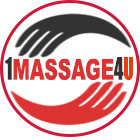There are a few different practices about how reflexology works.
In traditional Chinese medicine
Reflexology rests on the ancient Chinese belief in qi (pronounced “chee”), or “vital energy.” Qi flows through each person. When a person feels stressed, their body blocks qi.
This can cause an imbalance in the body that leads to illness. Reflexology aims to keep qi flowing through the body, keeping it balanced and disease free.
In Chinese medicine, different body parts correspond with different pressure points on the body.
Reflexologists use maps of these points in the feet, hands, and ears to determine where they should apply pressureby touching sends energy flowing through a person’s body until it reaches the area in need of healing.
Other practices
In the 1890s, British scientists found that nerves connect the skin and internal organs. They also found that the body’s entire nervous system tends to adjust to outside factors, including touch.
A reflexologist’s touch may help to calm the central nervous system, promoting relaxation and other benefits just like any form of massage.
Reflexology can reduce pain through calming touch, which may help to improve someone’s mood and reduce stress.
Zone Reflexology Practice
Zone Reflexology Practice holds that the body contains 10 vertical zones. Each zone contains different body parts and corresponds to specific fingers and toes.
By touching these fingers and toes allows them to access every body part in a particular zone.




